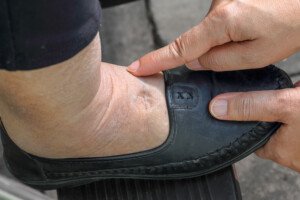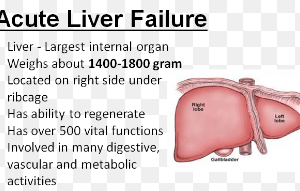Can someone have ONLY edema from chronic heart failure yet have no other symptoms such as easy fatigue from activities that normally never tired them?
Now, if one has always led a sedentary lifestyle – moving only when necessary – then it would be far more difficult for them to detect a worsening in stamina when walking from the sofa to the refrigerator.
But what if, for instance, they go on a brisk walk every Saturday that includes some hilly areas?
This would be a higher level of activity for which a gradual or insidious progression of intolerance would eventually get noticed.
Edema is a common result of chronic heart failure.
Suddenly realizing that your lower legs are “puffy” can be quite alarming.
Puffy lower legs and feet are associated with sickness.
We see it all the time, particularly in the elderly. It looks different from common excess fat.

Edema caused by chronic disease leaves an indent (which eventually disappears) when a fingertip is pressed into it. This is called pitting edema. Shutterstock/Toa55
Can edema be the only symptom of heart failure?
Chronic heart failure means a long-term situation in which the heart’s pumping action is impaired.
It just doesn’t “squeeze” out a sufficient amount of blood to deliver a healthful supply of oxygen throughout the body.
“There are different classifications of heart failure,” says Bethany Doran, MD, a board certified cardiologist and CEO of Enabled Health.
“We consider these NYHA Class I-IV,” continues Dr. Doran.
“Class I means that someone has structural issues with their heart (so they may have a low ejection fraction or weak heart squeeze) but no symptoms at all.
“Whereas class IV means that they are extremely symptomatic, even at rest.
“Someone can have edema for many different reasons – especially if they have varicose veins or other leaky veins in their legs.
“But if it is due to the heart, it means that their heart is not pumping well enough to fully pump all of the blood forward, and it is getting ‘backed up’ into their legs.
“In this case, they typically feel symptoms during exertion.
“However, some patients may not be exerting themselves as much and may not notice any symptoms.”
This means that someone who exercises strenuously will detect an increasing deficit long before, say, their very sedentary identical twin with the exact same heart condition will.
As mentioned, it’s easier for someone with a gradually weakening heart to realize that they’re panting more than usual during a gym workout than if all they did for movement was essential movement.
Thus, the question of, “Can you have edema from chronic heart failure without other symptoms” is a bit loaded.
In general, those with edema from heart failure will experience other symptoms.
People who develop gradual heart failure typically do not have a recent history of kicking butt in a gym or going on grueling mountain bike rides or rigorous three mile hikes.
The many risk factors for CHF include smoking, heavy drinking and obesity.
People who smoke, drink excessively or who are significantly overweight are much less likely than nonsmokers, non- or light drinkers and non-obese people to engage in consistent, grueling exercise sessions such as barbell and dumbbell workouts, step aerobics or boot camp classes, running, hill dashes, jump rope, martial arts, etc.
This all doesn’t mean that someone with edema from CHF won’t ever be seen inside a gym or on a hike.
In fact, when I was a member of a mountain club, I signed up for a hike that was rated as easy (minimal elevation gain).
Nevertheless, it was still a hike of several miles at altitude. In the group was an obese middle age man with what appeared to be some edema in his lower legs. He smoked a pipe before we departed on the hike.
But this same individual would surely find it impossible to complete a hike with greater elevation gain.
In general, the people you see participating in rigorous physical activity will not have edematous legs.
 Bethany Doran, MD, MPH, is a board certified cardiologist and CEO of Enabled Health, a hybrid in-person and virtual clinic that expands healthcare in rural areas and prevents readmissions for vulnerable patients managing chronic disease. Her work has been supported by grants from the NIH, American Heart Association and New York Academy of Medicine.
Bethany Doran, MD, MPH, is a board certified cardiologist and CEO of Enabled Health, a hybrid in-person and virtual clinic that expands healthcare in rural areas and prevents readmissions for vulnerable patients managing chronic disease. Her work has been supported by grants from the NIH, American Heart Association and New York Academy of Medicine.
 Lorra Garrick is a former personal trainer certified through the American Council on Exercise. At Bally Total Fitness she trained women and men of all ages for fat loss, muscle building, fitness and improved health.
Lorra Garrick is a former personal trainer certified through the American Council on Exercise. At Bally Total Fitness she trained women and men of all ages for fat loss, muscle building, fitness and improved health.
.



























